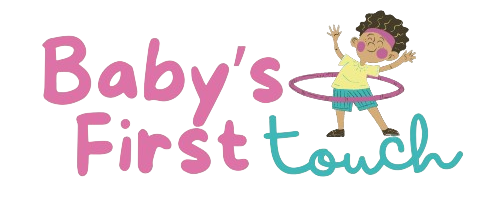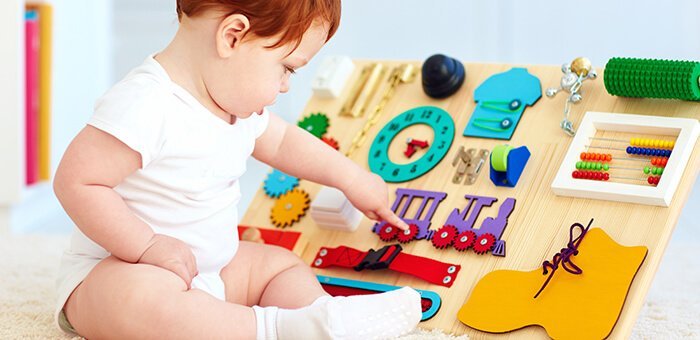Table of Contents
- Understanding Childhood Constipation: More Than Meets the Eye
- The Power of Diet: Your First Line of Defense
- Lifestyle Tweaks and Toilet Habits: Building Better Routines
- When Diet and Lifestyle Aren’t Enough: Medical Interventions
- Putting It All Together: Practical Tips for Parents
- Moving Towards Comfortable Tummies: A Final Word
Poop Problems? Tackling Childhood Constipation with Diet, Habits, and Help
Let’s face it, few things can disrupt household harmony quite like a child struggling with constipation. The tears, the tummy aches, the refusal to even *go near* the potty – it’s stressful for everyone involved. If you’re nodding along, know this: you are absolutely not alone. Childhood constipation is incredibly common, affecting countless families. It’s more than just infrequent poops; it can impact appetite, mood, and even lead to anxiety around using the toilet. But here’s the good news: it’s almost always manageable. While it can sometimes feel like a frustrating puzzle, understanding the causes and exploring effective solutions – from simple dietary tweaks to medical support when needed – can make a world of difference. This guide is here to walk you through it, offering practical advice and actionable insights to help your little one find relief and get things moving smoothly again.
Understanding Childhood Constipation: More Than Meets the Eye
Before we dive into solutions, let’s clarify what we’re dealing with. Constipation isn’t just about how *often* a child poops, but also about the *quality* and *ease* of those bowel movements.
What Exactly *Is* Constipation in Kids?
While every child’s ‘normal’ pattern varies, constipation generally involves having bowel movements that are:
- Infrequent: Typically defined as fewer than three bowel movements per week.
- Hard and Dry: Stools may look like small pellets or large, difficult-to-pass masses.
- Painful to Pass: Your child might strain excessively, cry, or express discomfort during bowel movements.
- Large Diameter: Stools might be so large they obstruct the toilet.
Other signs can include abdominal pain, bloating, decreased appetite, irritability, and sometimes even small amounts of liquid stool (encopresis) leaking around a blockage of hard stool in the rectum. This leakage is often mistaken for diarrhea but is actually a sign of severe constipation.
Why Does it Happen? Unraveling the Common Causes
Several factors can contribute to kids constipation relief challenges:
- Dietary Factors: This is a big one! A diet low in fiber (found in fruits, vegetables, whole grains) and insufficient fluid intake can lead to harder, drier stools that are difficult to pass. Too many processed foods, high-fat snacks, or excessive dairy in some children can also play a role.
- Stool Withholding: This is perhaps the most common culprit, especially in toddlers and preschoolers. A child might have one painful bowel movement and then consciously (or unconsciously) hold back their stool next time to avoid the anticipated pain. Other reasons for withholding include being too busy playing, fear of public toilets, or anxiety related to potty training constipation. This creates a vicious cycle: withholding leads to larger, harder stools, which cause more pain upon passing, reinforcing the urge to withhold.
- Changes in Routine: Travel, starting school or daycare, changes in schedule, or stressful life events can disrupt a child’s regular bowel habits.
- Illness and Medications: Certain illnesses, especially those involving fever or dehydration, can slow down the bowels. Some medications (like certain pain relievers or iron supplements) can also have constipation as a side effect.
- Underlying Medical Conditions (Less Common): In rare cases, constipation can be a symptom of an underlying issue like Hirschsprung’s disease, thyroid problems, celiac disease, or certain neurological conditions. If constipation is severe, persistent, or accompanied by other worrying symptoms, a medical evaluation is crucial.
Spotting the Signs: Is Your Child Constipated?
Keep an eye out for these common indicators:
- Less than 3 bowel movements per week.
- Stools that are hard, dry, lumpy, or pellet-like.
- Straining, grunting, or crying during bowel movements.
- Complaints of tummy aches, cramping, or bloating.
- Poor appetite or feeling full quickly.
- Small streaks of bright red blood on the stool or toilet paper (usually from a small tear called an anal fissure caused by passing hard stool).
- Liquid stool or ‘skid marks’ in underwear (encopresis).
- Changes in behavior, such as increased irritability or avoidance of the toilet.
- Unusual postures like rocking back and forth, clenching buttocks, or standing on tiptoes (attempts to withhold stool).

The Power of Diet: Your First Line of Defense
For many children, dietary adjustments are the cornerstone of managing constipation. Focusing on fiber and fluids can make a significant difference in stool consistency and regularity.
Fiber is Your Friend: Getting Things Moving
Fiber is the indigestible part of plant foods, and it plays a vital role in digestive health. There are two main types:
- Insoluble Fiber: Adds bulk to the stool, helping it move more quickly through the digestive tract. Found in whole grains, wheat bran, nuts, seeds, and the skins of fruits and vegetables.
- Soluble Fiber: Absorbs water, forming a gel-like substance that softens the stool. Found in oats, barley, beans, lentils, peas, apples, citrus fruits, and carrots.
Both types are important for preventing and managing childhood constipation.
High-Fiber Food Heroes for Kids
Boosting fiber doesn’t have to mean boring food! Focus on incorporating these kid-friendly options:
- Fruits: Pears (with skin), plums, prunes (and prune juice – start small!), berries (raspberries, blackberries, strawberries), apples (with skin), kiwis, oranges, peaches.
- Vegetables: Broccoli, carrots, peas, green beans, sweet potatoes (with skin), corn, leafy greens (spinach – try in smoothies!).
- Whole Grains: Oatmeal, whole-wheat bread, whole-wheat pasta, brown rice, quinoa, high-fiber cereals (check labels!).
- Legumes: Beans (black beans, kidney beans, chickpeas), lentils, split peas.
Making Fiber Fun (and Sneaky!)
Getting kids to embrace high-fiber foods can sometimes be a challenge. Try these tips:
- Go Slow: Introduce fiber gradually to avoid gas and bloating.
- Smoothie Power: Blend fruits (like berries or kiwi), spinach, and a liquid base (water, milk, yogurt). You can even add a spoonful of ground flaxseed or chia seeds for an extra fiber boost.
- Veggie Vehicles: Offer raw veggies (carrots, bell peppers, cucumbers) with hummus or a yogurt-based dip.
- Sneaky Swaps: Use whole-wheat flour instead of white flour in pancakes or muffins. Mix brown rice with white rice. Add lentils or finely chopped vegetables to pasta sauces or meatballs.
- Fruity Fun: Offer fruit salads, fruit kebabs, or baked apples with cinnamon.
- Bean Bonanza: Add beans to soups, stews, tacos, or quesadillas. Mash chickpeas into tuna salad.
Hydration Station: Drink Up!
Fiber needs water to work its magic! Without enough fluids, fiber can actually make constipation worse. Water helps soften the stool, making it easier to pass.
- How Much? Fluid needs vary by age, activity level, and climate. A general guideline is for children aged 1-3 to aim for about 4 cups (32 oz) of beverages daily, and kids 4-8 to aim for about 5 cups (40 oz). Older children need more. Water should be the primary beverage.
- Best Choices: Water is king! Milk is also hydrating. Limit sugary drinks like soda and excessive fruit juice (which can sometimes worsen diarrhea or contribute unnecessary sugar). If offering juice, stick to 100% fruit juice and limit it to 4-6 oz per day, potentially diluted with water.
- Make it Appealing: Get a fun water bottle, use silly straws, add slices of fruit (lemon, orange, berries) to water for flavor, or offer homemade popsicles made from diluted fruit juice or blended fruit.

Foods to Limit (Sometimes)
While focusing on adding fiber and fluids is key, be mindful of foods that *can* contribute to constipation in some children. These often include:
- Highly processed foods (fast food, chips, sugary snacks, white bread, white pasta).
- Large amounts of dairy products (milk, cheese, yogurt) *in some susceptible children*. Don’t eliminate dairy entirely without consulting a doctor, as it’s an important source of calcium and vitamin D, but be aware of its potential impact.
- Bananas (especially unripe ones) and cooked carrots are sometimes cited, though evidence is mixed and they offer other nutritional benefits.
The key is balance and observation. Notice if particular foods seem to trigger constipation in your child.
Lifestyle Tweaks and Toilet Habits: Building Better Routines
Beyond diet, establishing positive toilet habits and encouraging physical activity can significantly help manage and prevent constipation in children.
Establishing a Regular Toilet Routine
Consistency is crucial, especially for children prone to withholding.
- Scheduled Sitting: Encourage your child to sit on the toilet for 5-10 minutes, ideally 20-30 minutes after meals (especially breakfast). This utilizes the body’s natural gastrocolic reflex, which increases bowel activity after eating.
- No Pressure Zone: Make toilet time relaxed. Avoid scolding, pressuring, or showing frustration if they don’t poop. Provide books or quiet activities to make sitting less tedious.
- Proper Positioning: Ensure your child’s feet are firmly supported on the floor or a sturdy footstool. Having knees slightly higher than hips relaxes the pelvic floor muscles, making pooping easier. This is vital! A dangling-feet position makes it physically harder to push effectively.

Movement Matters: Get Active!
Physical activity isn’t just good for overall health; it helps stimulate the natural contractions of the intestinal muscles, promoting bowel regularity. Encourage your child to:
- Play outside: Running, jumping, climbing.
- Dance to music.
- Ride bikes or scooters.
- Participate in sports.
- Go for family walks.
Aim for at least 60 minutes of moderate-to-vigorous activity most days.
Addressing Withholding Behavior
If stool withholding is a factor, addressing the underlying fear or habit is key.
- Stay Positive: Create a supportive, non-judgmental atmosphere around toileting. Praise effort, not just results.
- Reward Systems: Use sticker charts or small rewards for *trying* to use the toilet during scheduled times, regardless of whether they produce a stool. This reinforces the habit of sitting.
- Talk About It (Age Appropriately): Gently discuss any fears they might have about pooping hurting. Reassure them that as the poop gets softer (with diet changes or medication), it won’t hurt anymore. Books about pooping can sometimes help normalize the process.
- Avoid Punishment: Never punish a child for accidents (encopresis) or for not pooping. This increases anxiety and makes withholding worse.
When Diet and Lifestyle Aren’t Enough: Medical Interventions
Sometimes, despite your best efforts with diet and lifestyle changes, constipation persists or becomes chronic. In these cases, medical intervention is necessary and highly effective.
Talking to Your Doctor: When to Seek Help
It’s time to consult your pediatrician or healthcare provider if:
- Constipation lasts longer than two weeks.
- Dietary changes haven’t brought improvement.
- Your child experiences severe pain with bowel movements.
- You see blood in the stool (more than just a small streak).
- Your child is vomiting, losing weight, has a fever, or significant abdominal swelling.
- Constipation occurs in an infant less than one month old.
- You notice persistent stool leakage (encopresis).
- You have any concerns about your child’s bowel habits or overall health.
Your doctor can perform an examination, rule out underlying medical conditions, and recommend appropriate pediatric constipation treatment.
The Role of Laxatives and Stool Softeners
For moderate to severe constipation, particularly when withholding is involved, medication is often required. The goal is twofold: first, to clear out any backed-up (impacted) stool, and second, to maintain regular, soft bowel movements to allow the stretched rectum to return to its normal size and function, and to break the pain-withholding cycle.
Important Note: NEVER give your child laxatives, enemas, or suppositories without specific guidance from a healthcare professional. Dosages and types suitable for adults are often inappropriate and potentially harmful for children.
Types of Laxatives Used in Children
Doctors typically recommend specific types of laxatives for children:
- Osmotic Laxatives: These are often the first-line treatment. They work by drawing extra water into the colon, which softens the stool and makes it easier to pass. Common examples include polyethylene glycol 3350 (PEG 3350, found in brands like Miralax, RestoraLAX, GlycoLax) and lactulose. They are generally considered safe for long-term use under medical supervision.
- Stool Softeners: Medications like docusate sodium work by allowing more water and fat to mix into the stool, softening it. They don’t stimulate bowel movements directly and are sometimes used in combination with other laxatives. Their effectiveness is debated, and osmotic laxatives are often preferred.
- Stimulant Laxatives: These medications (e.g., senna, bisacodyl) work by stimulating the muscles of the intestinal wall to contract, pushing stool along. They are usually reserved for short-term use or for the initial ‘clean-out’ phase, as prolonged use can lead to dependence or cramping.
- Lubricant Laxatives: Mineral oil coats the stool, making it slippery and easier to pass. It’s used less frequently now due to potential risks like aspiration (if inhaled) and interference with vitamin absorption.
Important Considerations for Medication Use
- Medical Guidance is Essential: Always use these medications under the direction of your doctor, following their specific dosage and duration instructions.
- The Clean-Out Phase: If there’s significant stool backup, the doctor may initially prescribe higher doses of an osmotic laxative (or sometimes a stimulant) for several days to completely empty the colon.
- Maintenance Therapy: This is crucial. After the clean-out, a lower daily dose of an osmotic laxative is typically continued for several months (sometimes longer). The goal is to consistently produce one soft, comfortable stool daily. Stopping medication too soon often leads to a relapse.
- Side Effects: Osmotic laxatives might cause temporary bloating, gas, or loose stools initially. Stimulant laxatives can sometimes cause cramping. Discuss any side effects with your doctor.
- Consistency is Key: Give the medication regularly as prescribed, even if your child seems better, until your doctor advises stopping.
Other Medical Approaches
In persistent or complex cases, other options might be considered:
- Enemas or Suppositories: May be used occasionally under medical supervision, particularly for severe impaction or during the initial clean-out.
- Biofeedback Therapy: For older children who have trouble coordinating the muscles used for defecation, this therapy can help them learn to relax the pelvic floor while pushing.
- Referral to Specialist: A pediatric gastroenterologist may be consulted for complex cases or if underlying conditions are suspected.

Putting It All Together: Practical Tips for Parents
Managing childhood constipation requires a consistent, patient approach. Here are some final tips:
- Be Patient and Persistent: Resolving constipation, especially chronic cases involving withholding, takes time – often months. Stick with the plan (diet, fluids, toilet routine, medication if prescribed) even when progress feels slow.
- Keep a Stool Diary: Tracking bowel movement frequency, stool consistency (using the Bristol Stool Chart can be helpful), episodes of pain or straining, diet, fluid intake, and medication doses can provide valuable information for you and your doctor.
- Communicate with School/Daycare: Ensure caregivers are aware of the plan, encourage regular toilet breaks, and support dietary goals.
- Focus on Positive Reinforcement: Celebrate successes, like trying to use the potty or having a comfortable poop. Avoid negativity around toileting.
- Don’t Blame the Child (or Yourself): Constipation is a common medical issue, often involving factors beyond anyone’s control. Approach it with empathy and focus on solutions.
Moving Towards Comfortable Tummies: A Final Word
Dealing with childhood constipation can certainly be challenging, but it’s a hurdle that most families can overcome. By understanding the causes and consistently implementing strategies focused on a fiber-rich diet, adequate hydration, positive toilet habits, and regular physical activity, you can often manage the issue effectively at home. Remember that stool withholding requires particular patience and a focus on breaking the fear-pain cycle. Don’t hesitate to seek support from your pediatrician, especially if constipation is severe, persistent, or causing significant distress. They are your partner in developing the right pediatric constipation treatment plan, which may include medication like laxatives for children. With persistence, patience, and the right approach, you can help your child achieve regular, comfortable bowel movements and leave the stress of constipation behind.



